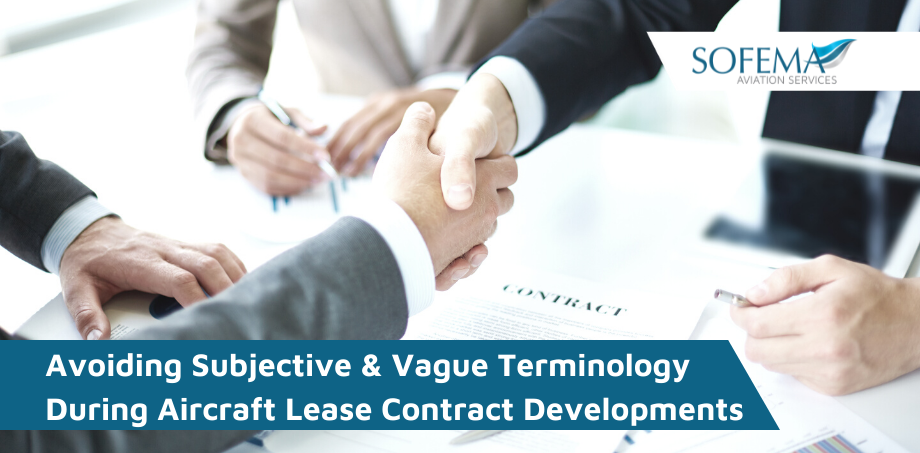Sofema Aviation Services (SAS) www.sassofia.com considers issues which are created due to ambiguous or phraseology which is subject to variable interpretation during Aircraft Lease Contract Developments.
Introduction – The problem with Vague, Un-Qualified and Open-Ended Commitments
What does “Good Condition” mean – clearly this is a very subjective term – What if the lessee has more onerous requirements how does this “sit” in the bigger picture.
What about All Aircraft Damage to be repaired? (Again open to interpretation – where does the Structural Repair Manual (SRM) or approved repairs sit in reference to this statement?)
Please consider the following as an acceptable use of terminology:
“All damage to the Aircraft outside of maintenance manual limits will have been repaired in accordance with the SRM or as approved by the Airframe Manufacturer.”
The Lessors Objective
- Clearly, the goal for the lessor is to ensure that the delivery conditions are achievable.
- Ideally to agree on a delivery condition that will satisfy the lessee that they are getting a satisfactory aircraft in respect of aircraft serviceability and conformity with EASA regulations.
Dealing with Discrepancies
Different lessors will of course address the issue of discrepancies in different ways.
- Essentially the lease agreement should identify that the lessee cannot refuse acceptance of the aircraft because of “certain” delivery condition discrepancies.
- The actual discrepancy criteria and boundaries should be identified within the lease agreement.
Note: The lessee has control of the aircraft during the lease term and is therefore responsible for arranging the return maintenance and part of its business is managing aircraft maintenance.
The lessor relies on the previous lessee to perform its obligations–consequently, it is typically not possible to hold the lessor to exactly the same standard.
Aircraft Lease Transition Considerations
- During the transition process, the majority of the work required to complete the transition process is outside the control of the lessor.
- It is normal for the lessor to have an extended grace period to enable the satisfying of delivery conditions.
Note: It is not expected that the lessee should try to delay inspections or other activities to run out any grace period and to extricate, terminate (or renegotiate) its obligations.
- Three to six months is a typical grace period (or longer in extenuating circumstances).
Delay Compensation Payments
Any delay will likely have negative economic consequences for both the lessee and lessor.
- The returning lessee may be obligated to pay a penalty in connection with a delay in the return of the aircraft, in which case a typical outcome would be for the lessor and new lessee to share that compensation.
- The lease agreement typically does not provide for the lessor being liable for any such losses suffered by the lessee.
Next Steps
Follow this link to our Library to find & Download related documents for Free.
Sofema Aviation Services (www.sassofia.com) and Sofema Online (www.sofemaonline.com) offer multiple soft skills training including the following course: Aviation Leadership and Management Skills Development – Developing Negotiation Skills – 1 Day
For additional details visit our websites www.sassofia.com and www.sofemaonline.com or email team@sassofia.com
Tags:
aviation, EASA, Lessee, SRM, Aircraft Lease, Aviation Leadership, Aviation Leadership and Management Skills, Aircraft Damage, Structural Repair Manuals, Lease Contracts, Developing Negotiation Skills, Negotiating Skills, Aircraft Lease Contract Developments, Airframe Manufacturer





